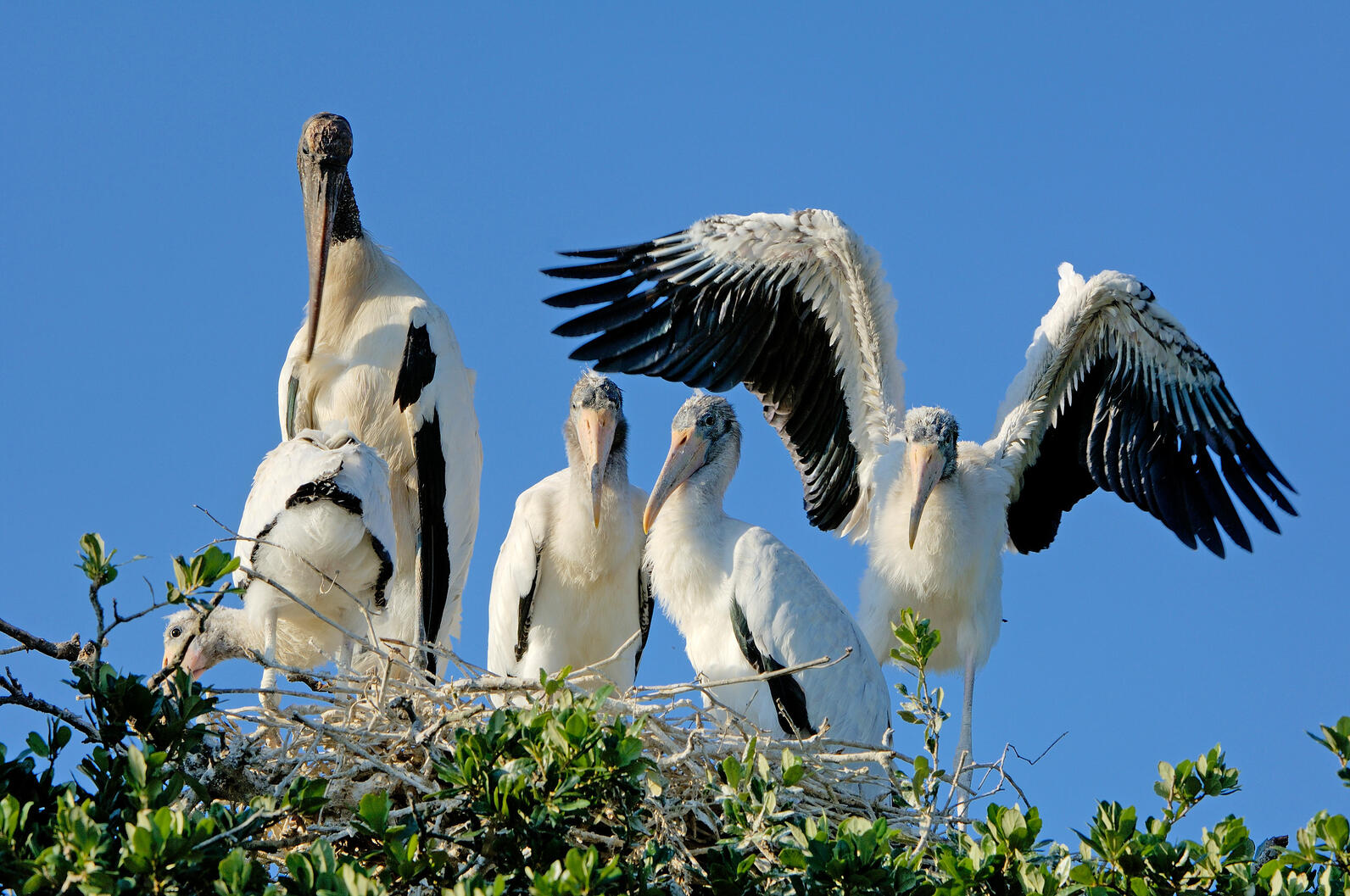
Wading birds are not only iconic Florida species but also critical barometers for the health of the Everglades and efforts to restore the River of Grass. Each year, staff from the South Florida Water Management District, Florida Atlantic University, Audubon, and others combine survey results to measure nesting success across the Everglades. The annual Wading Bird Report is produced by the South Florida Water Management District.
“We cannot depend on perfectly aligned weather events for successful wading bird seasons,” says Julie Wraithmell, Audubon Florida Executive Director. “We need science-based restoration and rigorous regulatory programs to remain a priority in South Florida, not only for wading birds but also to ensure clean drinking water, resilient coastlines, and a thriving Everglades.”
Nevertheless, 2019's numbers come close to the 10-year average -- an important measure because wading bird numbers vary from year to year based on the availability of prey, which is heavily influenced by rainfall in the right amounts, places, and times.
Surveys recorded a total of 37,303 nests.
Because water levels peaked relatively early in the nesting season, a dry December heralded the start of a difficult 2019. Unfortunately, heavy rainfall in early 2019 inundated nesting areas and spread out prey, and successfully feeding chicks became nearly impossible for early nesters including Wood Storks, Roseate Spoonbills, and Great Egrets. Birds that nested after water levels ebbed in February were more successful.
Notably, sea-level rise has already played a role in reducing the numbers of successfully nesting Roseate Spoonbills, a species that depends on specific water levels in order to gather enough prey for their voracious chicks.
A thriving wading bird population is a goal of the Comprehensive Everglades Restoration Plan (CERP) and other Everglades restoration programs. And while the success of the 2018 season moved the needle considerably in most measures, the 2019 season was comparatively disappointing.
It is important however in large-scale restoration efforts to consider long-term trends. Long-term data reveal that several nesting responses have improved over the past 20 years and the numbers of White Ibis, Wood Stork, and Great Egret nests have increased over the past 20 years, frequently meeting restoration targets.
Audubon Florida protects birds and the habitat they need, today and in the future.
Click here to read our report summary.
Click here to read the full report.







